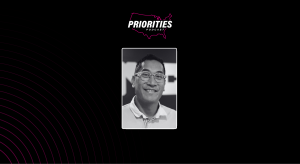Inside New Jersey’s data-driven content strategy to boost service delivery
Given the many enormous responsibilities governments are entrusted with, digital content strategy and user experience may seem like minor matters in comparison. However, they are how residents actually experience government and can even determine the effectiveness of a policy.
More than a matter of aesthetics, content creation and organization on government sites have real consequences. Cluttered layouts, confusing information or poorly arranged content can mean the difference between someone finding the help they need or continuing to struggle.
So to improve service delivery, the State of New Jersey is adopting a data-centric approach to online content strategy. In other words, using data to proactively determine what information needs to be shared, how it is organized and where it is featured.
Unlike many government websites, which feature static content and press releases, the New Jersey State Office of Innovation has been spearheading the use of data analytics on two critical websites to rapidly identify residents’ needs and create simple, straightforward content that connects people with the right programs and services when they need them most.
At the onset of the pandemic in March 2020, the Office of Innovation began applying a data-driven approach to creating and organizing content on the State’s newly-created business information hub, Business.NJ.gov, as well as the COVID-19 Information Hub.
In practice, that means the sites’ content teams regularly study search data, user-submitted questions and website behavior along with live-chat and call center data to determine the most pressing needs or shortcomings in existing content and how to respond accordingly.
So when there is a large increase in searches or user questions for a topic that the sites lack information on, the content teams work with state agencies to update existing content or create new, easy-to-understand content, so businesses and residents can get help, whether it be with sick leave, business loans, COVID-19 testing or housing assistance.
When search results for key terms do not return the most relevant articles, the content teams add additional tags and keywords on the backend to ensure users are finding the information they seek.
Not only is the content updated in response to residents’ needs, but how it is organized, in terms of layout and navigation, is also revised. Items featured on homepages are reviewed weekly and replaced with the most searched for articles or recent articles that highlight new programs and information.
Meanwhile, page layouts are tested with users and redesigned to optimize ease of use. For instance, the state’s COVID-19 Vaccine landing page was redesigned to prominently feature fewer and more-concrete calls to action, rather than icons with general information after A/B testing revealed users were primarily focused on getting the vaccine.
Similarly, Business.NJ.gov was completely redesigned, including its navigation, menus and color scheme, based on extensive user testing. In addition, smaller adjustments are regularly made to the site based on ongoing user testing, which provides a steady stream of data.
This iterative approach proved particularly necessary in the early stages of the pandemic when there was confusion around evolving safety protocols and government requirements for businesses and individuals. In response to rapidly changing events and growing needs, the state dramatically increased the pace of content creation, sometimes updating pages multiple times a day as needed to ensure accuracy and relevance.
Since the COVID-19 Information Hub was created, it has been visited more than 100 million times, which informed more than 134,000 updates to the site. Meanwhile, Business.NJ.gov has been visited more than 4 million times and the content team has created more than 190 COVID-19 related articles, with up to 50 live at a time and updated daily.
This is a significant departure from the many other cluttered and static government websites. It instead puts user needs first with data-driven editorial decisions. At its core, these practices stem from a fundamentally different approach to government website management that recognizes the speed at which information travels and how sites can be used as proactive, news-driven communication tools, rather than passive announcements.
It’s a simple shift in how existing assets are used, but one that has a dramatic impact. By following data rather than instincts, content teams are able to strategically develop the most relevant content based on actual needs as they emerge.
At its most basic, government communications is about getting the right information to the right people at the right time — and with data, content creators can do just that.
Eugene K. Chow is a research fellow at the New Jersey State Office of Innovation.






